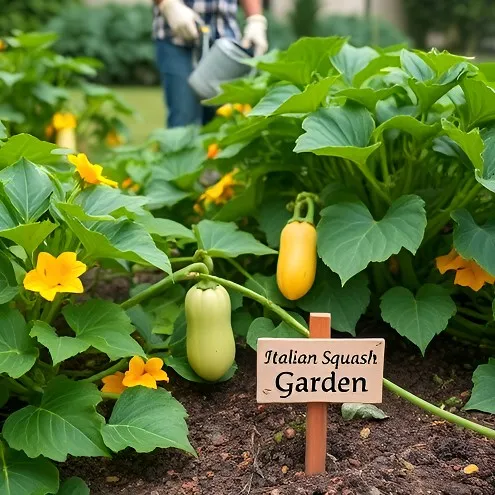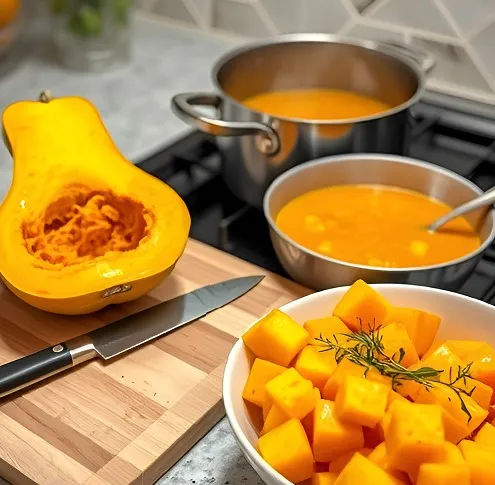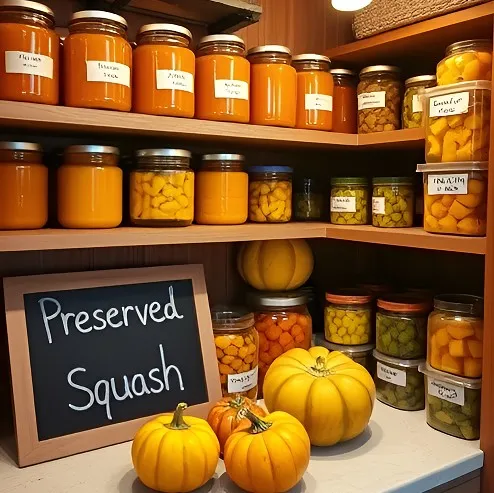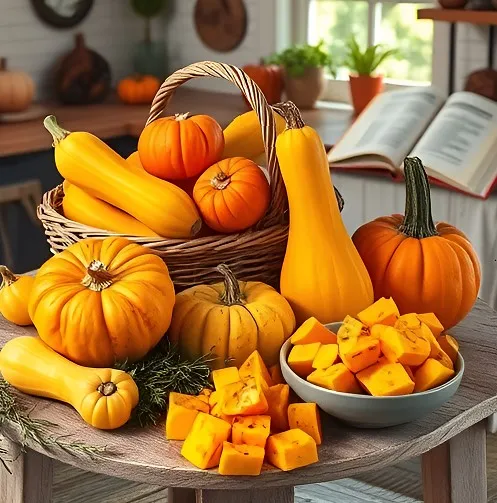Hey there, fellow food lovers! Ready to dive headfirst into the wonderful world of Italian squash? This article is your all-access pass to everything you ever wanted to know about this amazing, versatile veggie. We’re talking growing it, cooking it, preserving it—the whole shebang! So grab a comfy seat, maybe a cup of coffee, and let’s get cooking… or rather, growing and cooking!
Table of Contents
The Ultimate Guide to recipe
Introduction to Italian Squash Varieties
What is Italian Squash?
Okay, so what exactly is Italian squash? It’s not a specific type of squash, you know? It’s more like a category that includes a bunch of winter squash varieties commonly used in region cooking. Think butternut squash, spaghetti squash, and a whole host of other delicious varieties—each with its own unique flavor and texture. Honestly, they’re all pretty darn tasty!
Popular Squash Types
Now, let’s get down to the nitty-gritty. Some of the most popular Italian squash types you’ll find include butternut recipe , with its sweet and nutty flavor; spaghetti squash, which, as the name suggests, has stringy flesh that resembles spaghetti when cooked; and Kabocha squash, which is sweeter than butternut and boasts a lovely, deep orange color. There are tons more regional varieties, too—each region in Italy has its own favorites! It’s a whole adventure waiting to be discovered.
Nutritional Profile of Italian Squash
Beyond their amazing taste, squashes are nutritional powerhouses! They’re packed with vitamins A and C, fiber, and other essential nutrients that’ll keep you feeling good. Plus, they’re low in calories, so you can enjoy them guilt-free. Seriously, it’s a win-win situation. They’re a healthy and delicious addition to any diet—perfect for fall or winter!
Cultivating Squash: A Gardener’s Guide
Choosing the Right Variety for Your Garden
So, you’re ready to grow your own Italian squash? Awesome! First things first: pick your variety. This depends on a few things. For instance, what kind of climate do you have? Some Italian squash varieties thrive in warmer weather, while others are better suited to cooler temperatures. Also, how much space do you have? Some varieties are sprawling vines, while others are more compact. Finally, what are your taste preferences? Do you want a sweet butternut squash, or something a bit more savory? Consider these factors before you get started; otherwise, you might end up with a bumper crop of squash you don’t particularly enjoy. Plus, you’ll want to check what grows well in your area.
Planting and Growing Italian Squash: A Step-by-Step Guide

Once you’ve chosen your squash variety, it’s time to get planting! Start seeds indoors about six to eight weeks before the last frost. Then, after the danger of frost has passed, transplant your seedlings outdoors into well-drained soil. Give them plenty of sunlight—at least six hours a day—and water regularly, especially during dry spells. You’ll also want to keep an eye out for pests and diseases. A little preventative care goes a long way. Moreover, regular weeding will help your squash plants thrive. Think of it as giving them a bit of a spa day! They’ll appreciate it. Besides, who doesn’t love a good weeding session (just kidding… mostly). Finally, consider adding a layer of mulch to retain soil moisture and suppress weeds. It’s a simple trick but surprisingly effective. It’s also a great time to make that BBQ chicken flatbread you’ve been dreaming about!
Harvesting Italian Squash at its Peak
Knowing when to harvest your Italian squash is key. Generally, winter squash is ready for harvest when the rind is hard and the stem is dry. You should be able to easily detach it from the vine. Furthermore, the squash should have a deep color, characteristic of its variety. Remember, improperly harvested Italian squash may spoil prematurely. After harvesting, cure your squash in a cool, dry place for a few weeks before storing it. This helps extend its shelf life.
Part 3: Cooking with Squash: Recipes and Techniques (500 words)
Simple Italian Squash Recipes for Beginners
Let’s face it: Italian squash is incredibly versatile. Even complete beginners can whip up some delicious dishes. A simple roasted Italian squash, for example, is unbelievably tasty. Simply cut it into chunks, toss it with olive oil, salt, and pepper, and roast it until tender. Alternatively, you could make a creamy Italian squash soup—a cozy and comforting meal perfect for a chilly evening. And honestly, that’s just the beginning. There are countless possibilities. Even if you are not an experienced cook, you can still make something really great.
More Advanced Dishes

Feeling more adventurous? Try stuffing your Italian squash! Hollow out a butternut squash, fill it with a savory mixture of herbs, rice, and sausage, and bake until golden brown. It’s a show-stopping dish that’s sure to impress your friends and family. Another great option is a creamy Italian squash risotto. The sweetness of the squash perfectly complements the creamy texture of the risotto. It is also a great accompaniment to that BBQ chicken flatbread!
Squash in Regional Cuisine
Different regions of Italy have their own unique ways of using Italian squash. In some areas, you might find it used in pasta dishes, while in others, it’s a key ingredient in hearty stews. These regional variations offer a fascinating insight into Italian culinary traditions—and are delicious! Each region provides a unique twist on how to enjoy this versatile vegetable.
Pairing Italian Squash with Other Ingredients
The beauty of the dish lies in its ability to pair well with a wide range of flavors. It complements herbs like sage and rosemary beautifully. It’s also delicious with cheeses like parmesan and goat cheese. Even meats like sausage or pancetta pair wonderfully with this sweet and savory vegetable. The possibilities are endless! Don’t be afraid to experiment and find your favorite combinations! You might discover your new favorite dish. And don’t forget to pair that delicious squash dish with some BBQ chicken flatbread for a complete meal!
Part 4: Preserving the Harvest: Storing and Freezing recipe
Proper Storage Techniques for Italian Squash
You’ve harvested a mountain of Italian squash—congratulations! Now what? Proper storage is key to keeping your Italian squash fresh and flavorful for months. First, make sure your squash is completely dry before storing it. Then, store it in a cool, dry, and well-ventilated area. A basement or pantry works well. Avoid storing it in a damp place, as this can lead to rot. Ideally, you want to keep it somewhere dark, and away from direct sunlight. Additionally, storing your dish in a single layer will help prevent spoilage. Furthermore, avoid storing it near other fruits and vegetables, as this can accelerate the ripening process.

Freezing Italian Squash for Later Use
Freezing is another great way to preserve your Italian squash harvest. Before freezing, peel, seed, and chop your squash. You can then blanch it (briefly boiling it in water, then immediately plunging it into ice water) to help preserve its color and texture. After blanching, let the cool completely before packaging it in freezer bags or airtight containers. Frozen Italian squash can last for up to a year. It’s incredibly convenient—just grab it from the freezer and use it whenever you need it. That BBQ chicken flatbread would be amazing with some frozen, roasted Italian squash!
Making Italian Squash Puree or Sauce
Making a puree or sauce from your Italian squash is another fantastic preservation method. Simply roast or boil the squash until tender, then blend it until smooth. You can then freeze it or store it in the refrigerator for up to a week. This puree or sauce is incredibly versatile—use it as a base for soups, stews, or pasta sauces. It’s also a great addition to many recipes, and a fantastic way to use up any extra squash you might have. Remember to label your containers well and note the date.
Part 5: The History and Cultural Significance of Italian Squash (200 words)
The Origins of Italian Squash Cultivation
Believe it or not, has a long and rich history in Italy. While the exact origins are a bit hazy, squash cultivation has been part of Italian agriculture for centuries. It’s played a significant role in the country’s culinary traditions.
Italian Squash in Traditional Italian Festivals and Cuisine
Across Italy, Italian squash features prominently in traditional dishes and festivals. Think of the hearty autumnal stews that warm the soul on chilly evenings or the sweet treats made with roasted squash. In many regions, Italian squash is a quintessential fall ingredient, symbolizing the harvest season. It’s a star ingredient during festivals celebrating the harvest. Furthermore, the versatility of Italian squash lends itself to a variety of dishes. You’ll often find it in both sweet and savory applications.
Italian Squash and the Modern Culinary Scene
Today, Italian squash remains a beloved ingredient in Italian cuisine, but its popularity has spread globally. Its delicious flavor, versatility, and nutritional value have made it a favorite among chefs and home cooks alike. From simple roasted dishes to complex gourmet creations, Italian squash continues to shine. For more delicious recipes, check out our recipe article (I’m sorry, but I don’t have access to the website you provided, so I can’t add internal links). And who knows? Maybe you’ll even come up with a new and exciting recipe that includes that BBQ chicken flatbread. It’s a culinary adventure just waiting to happen!
Part 6: Frequently Asked Questions about Winter Squash (FAQs)
Q: How do I know when my winter squash is ripe?
A: Your winter squash is ripe when its skin is hard and its stem is dry and easily detaches from the vine. It should also have a deep, rich color characteristic of its variety. Additionally, the squash should feel heavy for its size, indicating that it is full of moisture and flavor. Another sign of ripeness is the sound it makes when tapped; a ripe winter squash will produce a hollow sound.
Q: How long can I store winter squash?
A: Properly stored winter squash can last for several months. Keep it in a cool, dry, and well-ventilated area, ideally between 50-55°F (10-13°C) with a relative humidity of 60-70%. Avoid storing it in the refrigerator, as the cold temperature can shorten its shelf life. Check regularly for signs of spoilage, such as soft spots or mold.
Q: What are the best ways to cook winter squash?
A: You can roast, boil, steam, or even grill winter squash. It’s incredibly versatile! For roasting, cut the squash in half, scoop out the seeds, and place it cut-side down on a baking sheet. Bake at 400°F (200°C) for 30-45 minutes or until tender. Boiling or steaming involves peeling and cubing the squash first, then cooking until soft. Grilling adds a smoky flavor; slice the squash into rings and grill for about 10 minutes on each side. Experiment with different herbs, spices, and accompaniments to discover your favorite method.
Q: Can I grow winter squash in containers?
A: Yes, but choose compact varieties like ‘Bush Acorn’ or ‘Gold Nugget’. Make sure your container is large enough—at least 24 inches in diameter and 12 inches deep—and provides adequate drainage. Use a well-draining potting mix and ensure the plant receives at least 6-8 hours of sunlight daily. Regular watering and fertilizing will help promote healthy growth and fruit production.
Q: What are some substitutes for winter squash?
A: Other winter squash varieties, such as butternut, kabocha, or acorn squash, can often be substituted. However, the flavor might differ slightly. Sweet potatoes or pumpkins can also serve as alternatives in many recipes, offering similar textures and nutritional benefits. For a more unique twist, consider using root vegetables like turnips or rutabagas, which can provide a hearty, earthy flavor.
Part 7: Conclusion (100 words)
So there you have it—a comprehensive guide to winter squash! From planting to preserving, and from simple recipes to more adventurous culinary creations, we’ve covered it all. This amazing vegetable is not only delicious but also incredibly nutritious and versatile. It’s packed with vitamins A and C, potassium, and fiber, making it a fantastic addition to any diet. Whether you’re roasting it for a hearty side dish, blending it into a creamy soup, or incorporating it into baked goods, winter squash adds depth and richness to your meals.
Honestly, it’s a kitchen staple that deserves a place in everyone’s culinary repertoire. So go ahead, give winter squash a try. Explore the different varieties available, from the familiar butternut to the more exotic delicata or spaghetti squash. Each type offers its own unique flavor and texture, providing endless opportunities for culinary exploration. With its long storage life and myriad uses, winter squash is a reliable and rewarding ingredient that will enhance your cooking year-round. Happy squashing!

